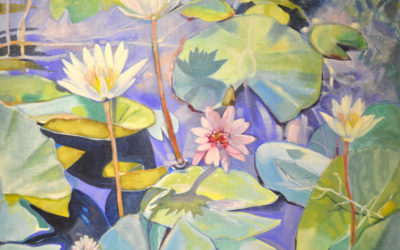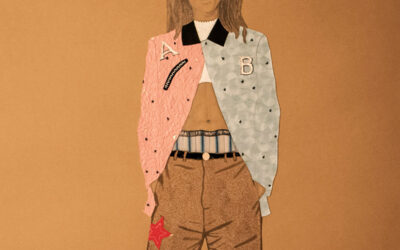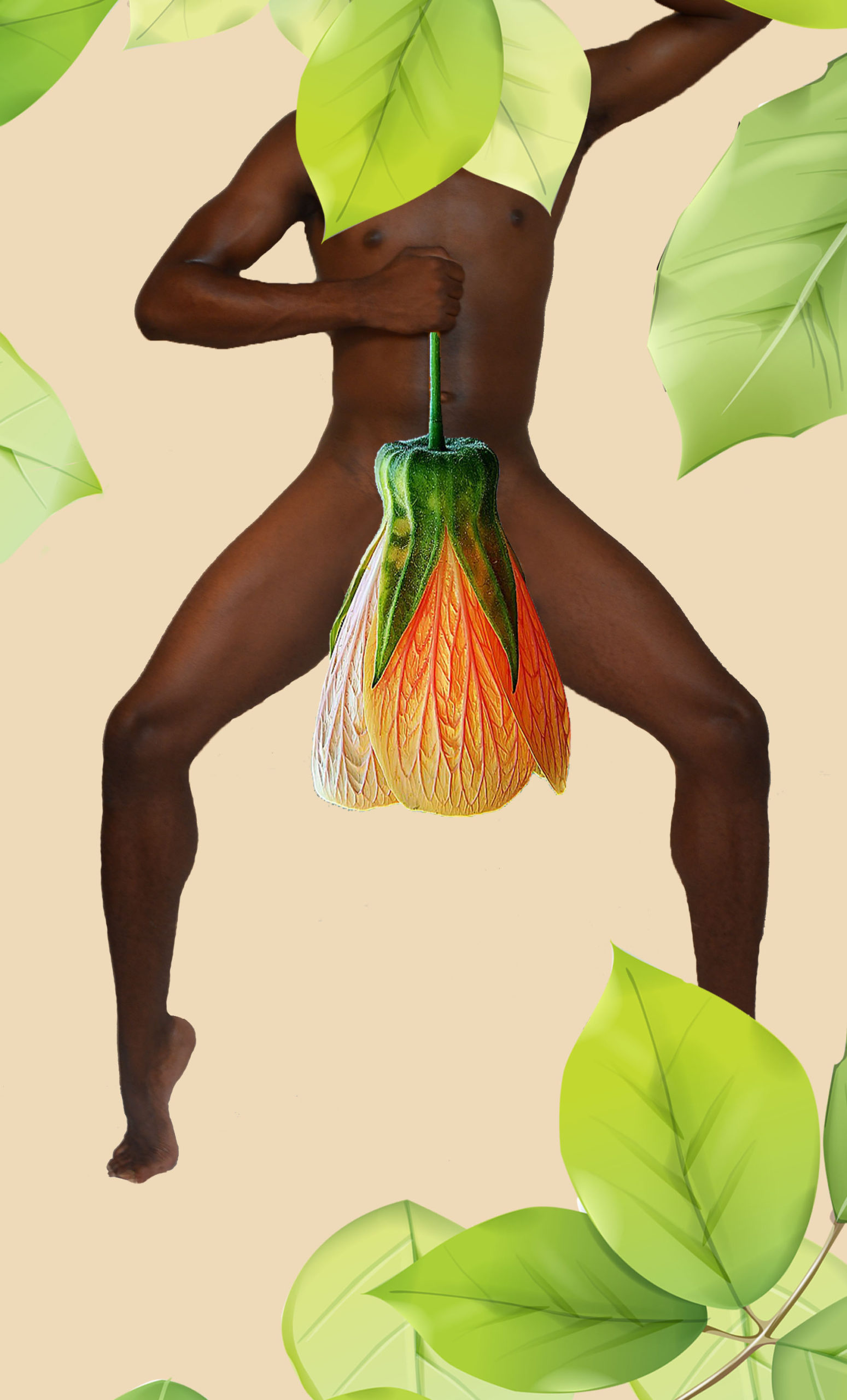
by Dr Ian Bethell-Bennett
Creative practice often opens the earthly self to infinite power of divine intervention. It is also a barrier-breaking expression and creative practice also allows healing. Art is multifaceted in its approach to the everyday as well as the transformative or the revolutionary. The “Fruit and the Seed”, the theme for the Ninth National Exhibition (NE9) provides artists the space to explore moving beyond essentialisms in an expansive way.
Artists Cydne Coleby and Jalan Harris do just this as they deconstruct the barrier between the perceived (un)beauty of Blackness, the distance between self, God and female expression as well as the space for voice, as postcolonial, decolonial, and feminists critics argue. The colours and images brought together in dialogue through mixed media facilitate the artists’ journey through trying to understand self.
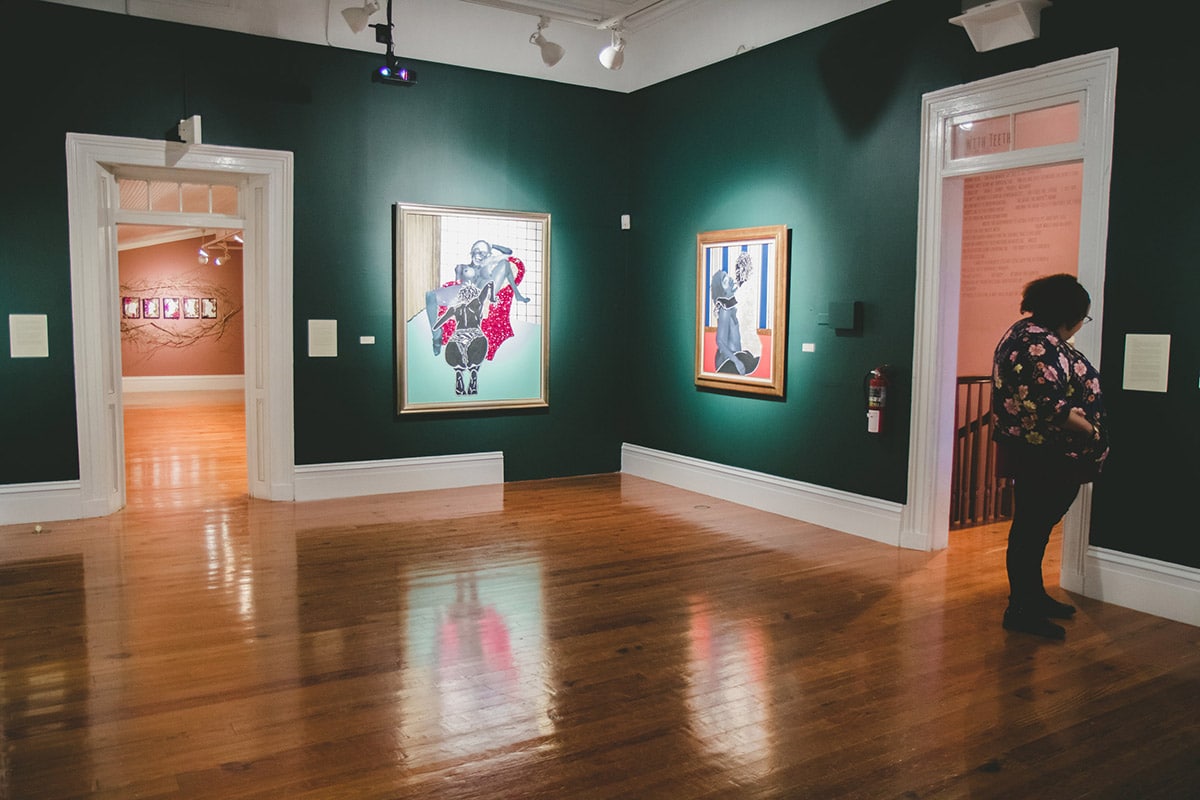
Pink and green, nature, the splashy, flashy-vibrant-glitter-laden-fuchsia all transcend boundaries. Colours and style speak to a mode of expression that almost seems Parisian with the aesthetic made infamous by the salons of the 1920s, 1930s, 1940s decades when the city pulsed with the arts that would transform the colonial world. The shifts were coming, the thinkers and doers, artists, philosophers, students, lawyers, and writers inhabited spaces like Paris’ Left bank, where pushing the envelope was commonplace. Somehow the space had been created to challenge the status quo that saw women, people of colour, and children as less than their white colonial, patriarchal leaders.
The writers James Baldwin and Jean Rhys, and performers Josephine Baker, Claude McKay, and James Joyce, all used their time in Paris around les années folles––the crazy years–– between the wars to deconstruct expressionism which transgressed boundaries and barriers. People explored the concepts of decolonial thinking. Paris was not only the home of expanding artistic expression and gender exploration, but it served as home to political ‘dissidents’ and artistic flair. Paris’ interwar years would change the face of colonial politics and art.It was a step into Black is beautiful and seeing the God in those who had been barred from possessing rights.
The trends from French modernism, arise in Harris’s work. The combination of colour and subject matter are edgy and rambunctious, yet squarely decolonial in the ways they challenge gender confines and the colonial male gaze imposed on all subjects. Perhaps the work being done for the National Exhibition 9, can be seen as a challenge to whose gaze controls/owns our bodies. The problem is always as M. Jacqui Alexander claims, the white colonial male gaze continues to imprison postcolonial bodies in a power dynamic that reduces them to subjects of outdated control. The artists in these works grapple with this gaze, subverting it and using elements of their experiences to speak out against it. However, Harris also seriously challenges this with the concept of self-pollination. There can be no binary, which is what so much of cutting edge decolonial thought and art address; this was in part at the heart of the Paris movement.
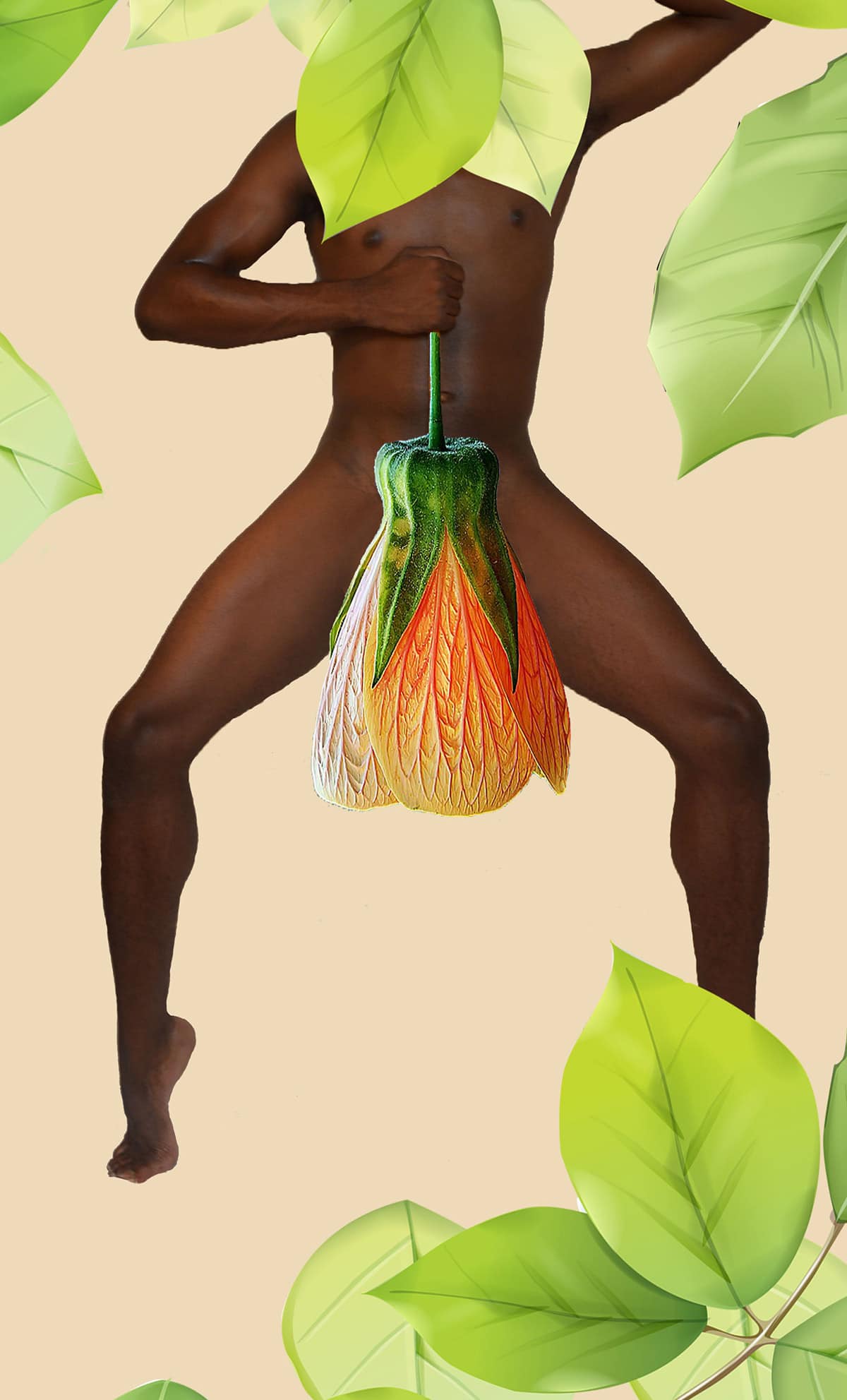
While those battles were fought, today, women are constantly berated into seeing something themselves as other than god. They are taught from birth, especially in fundamentalist and extremely religious homes that men are better than they are and that they should serve men. Men are likewise taught that they should dominate women, as they are the superior sex. This causes endless strife and discord. Yet, we continue to espouse such violence and to encourage disharmony in relationships that could otherwise be harmonious. Art addresses much of this gendered and disempowering discourse, and much of this is deconstructed by Harris and Coleby’s works.
The gaze that envelopes us is male. The gaze is also further complicated by race, class, religion, ethnicity and myriad power dynamics that we do not discuss, even though they silence most forms of women empowerment, and indeed most people of colour empowerment. Women’s images are usually more damaged through distortion and imposed gendered norms of inferiority and subservience than most male identities; however, the image of women and their relationship in society and with societies also influences how men behave.
In the interim, feminisms has fought to undo the work of damaging and controlling stereotypes of female disempowerment and lack of agency as demonstrated by Gayatri Spivak in her essay “Can the Subaltern Speak” (1988). Spivak, similar to later wave feminists Trinh Minh Ha, Dionne Brand, Alice Walker and bell hooks, and who may come through Sojourner Truth’s “Ain’t I a Woman” concept, deconstruct the primary colonizing gaze. They also challenge the silences of mainstream western feminisms’ efforts to silence other versions of non-western stories, voices and experiences, especially as demonstrated through Gloria Anzaldúa’s and Norma Cantu’s works from the Latinx experiences.
Today, the discussion has been even more deeply politicised and nuanced by refusing to accept binaries which leads to the deconstruction of spatial definitions of gender and to the fear of true female empowerment. These artists’ refusal to accept binaries seems to be spoken to openly in works of female liberation and seeing God in herself, not exclusively in himself or God as male.
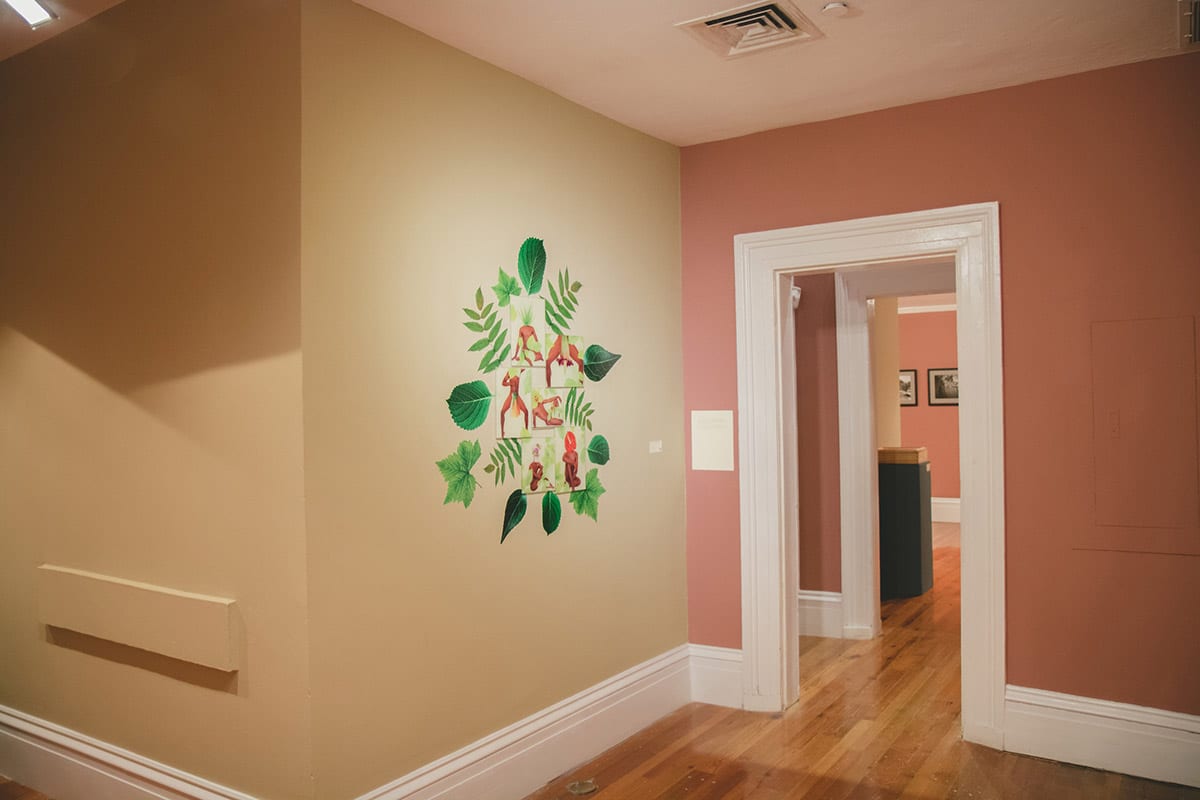
Cydne Coleby’s A God Called Self collage and Jalan Harris’s “Self-Pollinate” series speak to a deconstruction of binaries and learnt toxic relationships with self. We are taught, firstly, not to love our bodies, and these works, it seems, go into a deep and loving acceptance of the Self. We are taught to love God but to understand that this is a deeply asymmetric power relationship. It is interesting though that while we are taught that God is in all of us, we are also taught that “He” is outside of us, and the women are treated differently in his kingdom, all patriarchal and deeply polarized. This colonial, patriarchal and often misogynistic understanding of self and God causes problems, especially in a colonial post-colony. Coleby’s women enjoying the god in their bodies may spark unease because it refuses to accept the unhealthiness of how we are taught sexuality. The masculinist concept that female bodies should not experience joy through sex, as was seen during the Victorian period, (a period that has had lasting damaging effect on Caribbean communities) because its legacy through colonialism has never been decolonized.
It is so interesting to see the different kinds of conversations young women artists are pushing their work to have with such nuanced challenges to delimiting concepts of self. They refuse to accept that they have been overlooked or put aside. This is a space where until recently, art was seen often as male-dominant without having a great deal of female participation. This idea has changed and is continuing to change. Harris and Coleby push the envelope by deconstructing the binaries that, as their works show, do not exist other than to cause disharmony.
Harris’s work further deconstructs the body into what does not conform to the binary of self and other. We are the self, we are the power to create and to be. The colours between the works and the natural elements borrowed from the environment speak to a blurring of lines between nature and being, which is extremely important to the creative practices. “Self-pollination” challenges the superiority of male over female, of the gaze being always directed towards and around the female body, to fix it in disempowering space where it can only be inferior.
Coleby’s and Harris’s work come together to draw our eyes outside of their comfort zone of female-empowered male privilege to a gaze that, with colour and vibrancy, merges disunity and creates a conversation with self and the God power that created us. As Coleby notes the worshiper and the worker coexist; one does not preclude the existence of the other. Though our societies continue to insist they do.
Harris’s work uses a body that could be androgynous, but really is not because it self-pollinates. It merges the human and the natural into a space of flower power through exoticization of the erotic, though already deconstructing the Gauguin image of exotic femininity.
Black is beautiful female, self, godliness, and self-pollination function in pulling closely towards the Fruit and the Seed’s ideas of challenging the binaries we inhabit. The themes all challenge the imposed socio-cultural religious barrier between seeing God in me, though we be godlike.
